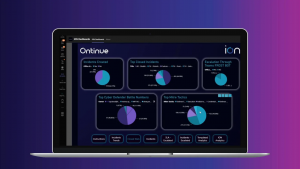Performance management: Can you really manage what you measure?
This is not an article about technology. It’s about Enterprise Performance Management, or EPM, an entire discipline concerning strategy, planning and forecasting and measuring results from operations, human resources and many other aspects of the organization.
The issues of measurement in performance management endure despite the fact that technology roars ahead with more data, less latency and ever more attractive ways to present measurement data to management and others. The gentle drizzle of information that was once the core of performance management systems is now more like being inside a dishwasher: tons of high-pressure streams from every conceivable direction.
Measurement is at the core of performance management, but is it really possible to use measurement – or metrics in the current parlance – to drive an organization? It can be fraught with danger. Suppose a model indicates that only the top 20 percent of your customers are profitable and the rest lose money and you choose to close the accounts of the other 80 percent (think about retail store closings, for example).
Suppose, however, that the model was unable to understand WHY they were unprofitable, but it turned out to be excessive waste and poor quality caused by you and customer profitability was incorrectly measured? Quantitative methods are only as good as the data, the methodologies employed and the skill of the modelers. You’d have to be crazy to run your company on algorithms.
There are two points of view about measurement, one widely accepted and current, the other opposing and more abstract.
The conventional wisdom on metrics
The conventional wisdom is that our technology is perfectly capable of providing detailed, current and relevant performance information to stakeholders in an enterprise, including executives, managers, functional people, customers, vendors and regulators. Because we are blessed with abundant computing resources, connectivity, bandwidth and even standards, it is possible to present this information in cognitively effective ways (dashboards, alerts and visualization, for example).
Recipients also can receive the information in the manner in which they choose, and the whole process pays dividends by supporting the notion that “If you can’t measure it, you can’t manage it.” It is hard to imagine how anyone could manage a large undertaking without measurement, isn’t it?
But measurement is only part of the solution. You can’t fix a broken company by measuring how broken it is.
The first step is knowing what to measure; then measuring it accurately; then finding a way to disseminate the information for maximum impact (figuring out how to keep it current and relevant); and then being able to actually do something about the results. A different way of saying this is that technology is never a solution to social problems, and interactions between human beings are inherently social. This is why performance management is a very complex discipline, not just the implementation of dashboard or scorecard technology.
Luckily, the business community seems to be plugged into this concept in a way they never were in the old context of business intelligence. In this new context, organizations understand that measurement tools only imply remediation and business intelligence is most often applied merely to inform people, not to catalyze change. In practice, such undertakings almost always lack a change management methodology or portfolio.
The alternative view
But there is an argument against measurement, too. Unlike machines or chemical reactions in a beaker, human beings are aware that they are being measured. In the realm of physics, the Observer Effect speculates that the act of measurement itself can very often distort the phenomena one is attempting to measure. When it comes to subatomic particles, we can pretty much assume it is a physical law that underlies this behavior.
With people, the unseen subtext is clearly conscious. People find the most ingenious ways to distort measurement systems to generate the numbers that are desired, not only NOT providing the desired behaviors, but often becoming more dysfunctional through the effort.
There are excellent, documented examples of this in “Measuring and Managing Performance in Organizations“ by Robert D. Austin. The author’s contention is that measurement of people always introduces distortion and often brings dysfunction because measurement is never more than a proxy or an approximation of the real phenomena.
In a particularly colorful analogy, Austin writes:
“Kaplan and Norton’s cockpit analogy would be accurate if it included a multitude of tiny gremlins controlling wing flaps, fuel flow, and so on of a plane being buffeted by winds and generally struggling against nature, but with the gremlins always controlling information flow back to the cockpit instruments, for fear that the pilot might find gremlin replacements. It would not be surprising if airplanes guided this way occasionally flew into mountains when they seemed to be progressing smoothly toward their destinations.”
We all know that incomplete proxies are too easy to exploit in the same way that inadequate software with programming gaps beckons unscrupulous hackers. However, one doesn’t have to be malicious to subvert a measurement system. After all, voluntary compliance to the tax code encourages a national obsession with “loopholes,” and what salesman hasn’t “sandbagged” a few deals for next quarter after she has met her quota for the current one?
The solution is not to discard measurement but rather to be conscious of this tendency and to be vigilant and thorough in the design of measurement systems. We all have a tendency toward simplifying things, but in some cases, it appears better not to measure at all than to produce something inadequate.
Performance management, to achieve its goals, has to be applied effectively, which is to say, with superior execution of technology, implementation and management. It has to be designed to be responsive to both incremental and unpredicted changes in the organization and the environment.
No roadmaps
There are no roadmaps for this. This is truly the first time that analytical and measurement technology can be embedded in day-to-day, instantaneous decision-making and tracking, and the industry is sorely lacking in skills and experience to pull it off. Those organizations that have been successful so far have relied on existing methodologies (activity-based costing or balanced scorecard, for example) to guide them through the more uncertain steps of metric formulation and change management to close the loop.
Wise leaders are not dogmatic; they are principle-driven and adaptive. The principle here is competitive advantage in decision-making, and clearly there are tradeoffs to be made in terms of quality versus scope versus timeliness versus participation versus other things. Different situations, even within the same organization, will call for different approaches to generate competitive advantage via decisions and analytics.
The question of whether you can ever adequately measure an organization is still open. To the extent that there are statutory and regulatory requirements, such as taxation, Securities and Exchange Commission or specific industry regulations, the answer is clearly that the metrics may be wrong, but they’re widely accepted.
To measure performance after the fact, at aggregated levels, is only useful to a point. The closer a measurement system gets to the actual events and actions that drive the higher-level numbers, the less reliable the cause-effect relationship becomes, just like Heisenberg found so long ago.
There are many examples in the management literature of everyone “doing the right thing” while the wheels are coming off the organization.
Recommended Reading:
Robert D. Austin, “Measuring and Managing Performance in Organizations“ (New York: Dorset House Publishing, 1996)
Shoshana Zuboff, “In the Age of the Smart Machine: The Future of Work and Power“ (New York, Basic Books, 1988)
Peter Drucker, “The Information Executives Truly Need,” Harvard Business Review (January-February 1995): 54-62
Image: rawpixel/Pixabay
A message from John Furrier, co-founder of SiliconANGLE:
Your vote of support is important to us and it helps us keep the content FREE.
One click below supports our mission to provide free, deep, and relevant content.
Join our community on YouTube
Join the community that includes more than 15,000 #CubeAlumni experts, including Amazon.com CEO Andy Jassy, Dell Technologies founder and CEO Michael Dell, Intel CEO Pat Gelsinger, and many more luminaries and experts.
THANK YOU



















